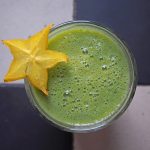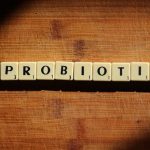The low-FODMAP diet helps people with digestive problems by reducing the amount of certain types of carbohydrates in their diet. The low FODMAP diet is often eaten by people who have gastrointestinal disorders, such as irritable bowel syndrome, in order to determine which foods trigger their symptoms.
Low-FODMAP Diet
The term FODMAP is an acronym for fermentable short-chain carbohydrates. These are a type of carbohydrate that is more difficult for people to digest. The acronym FODMAP stands for Fermentable Oligosaccharides, Disaccharides, Monosaccharides and Polyols.
The low-FODMAP diet removes certain carbohydrates from your diet to relieve digestive issues.
Getting rid of things that bother your gut can help it to heal itself and bring back a healthy mix of different bacteria. The low-FODMAP diet can help you identify which foods to limit in the future if your symptoms improve.
What are FODMAPs
Fermentable
The gut bacteria present in our digestive system feed on various types of food items. The process of fermentation is a chemical breakdown of these food items by the gut bacteria which results in the production of gasses.
Oligosaccharides
Prebiotics are beneficial to gut health as they are a type of soluble fiber which feed the good bacteria in the gut. Oligosaccharides include onions, garlic, beans/lentils and many wheat products.
Some cases of non-celiac gluten sensitivity may be explained by sensitivity to oligosaccharides.
Some people who believe they are sensitive to gluten may actually be experiencing allergic reactions to the oligosaccharides in wheat products. These oligosaccharides are sugars that are fermented by gut bacteria.
Disaccharides
Lactose is the sugar in dairy and human milk that can be fermented. Lactose intolerance is a very common food intolerance and affects people all over the world.
Monosaccharides
The sugar fructose is found in fruit and is the fermentable sugar in this group. However, this only happens when the fruit is consumed in certain quantities and proportions. All fruits are not affected by this.
Polyols
These are sugar alcohols, commonly used as artificial sweeteners. They are also found naturally in some fruits.
Low-FODMAP Diet Foods
The diet has three steps: eliminating certain foods, slowly reintroducing them, and then maintaining a diet that suits your individual needs. The elimination phase involves avoiding all high-FODMAP foods, which include specific fruits, vegetables, dairy products, and grains.
Some foods contain more FODMAPs than others. For example, certain fruits, vegetables, grains and proteins are higher in FODMAPs than others. While some foods may not bother you when eaten in small quantities, they may cause issues if consumed in larger amounts.
For example, most legumes and processed meats contain high levels of FODMAPs, but plain-cooked meats, tofu, and eggs are low-FODMAP protein sources. FODMAPs are found in high concentrations in apples, watermelon and stone fruits, but are present in much lower concentrations in grapes, strawberries and pineapples.
A ripe banana is high in fructose, but you can have up to a third of it cut up in your cereal, or you can have a whole one if it’s not quite ripe. Your dietician can help you figure out how many of each type of food you should be eating every day.
Upon first inspection, the elimination stage of the diet may appear to be quite restricted. There is still a good selection of food available in each food group. Although it requires some self-control, you won’t starve on this diet.
After a few weeks of following the elimination diet, you will start to slowly add certain foods back into your diet to see how your body reacts to them. This phase is all about figuring out what works well for you and what doesn’t so that you can start to leave out the things that don’t work.
Habitual intake of FODMAPs from a regular or high FODMAP diet typically ranges from 0.5 to 1 ounce, or 15 to 30 grams, of these carbs per day.
A low FODMAP diet means eating no more than 0.02 ounces (0.5 grams) of FODMAPs at one time. This is a very low amount, and if you eat small, frequent meals, it works out to 0.08–0.1 ounces (2.5–3 grams) of FODMAPs per day.
Luckily, many foods are naturally low in FODMAPs. Here’s a list of foods you can eat while following a low FODMAP diet:
- Proteins: beef, chicken, eggs, fish, lamb, pork, prawns, tempeh, and tofu
- Whole grains and starches: white and brown rice, lentils, corn, oats, quinoa, cassava, and potatoes
- Fruit: blueberries, raspberries, pineapple, honeydew melon, cantaloupe, kiwi, limes, guava, starfruit, grapes, and strawberries
- Vegetables: bean sprouts, bell peppers, radishes, bok choy, carrots, celery, eggplant, kale, tomatoes, spinach, cucumber, pumpkin, and zucchini
- Nuts: almonds (no more than 10 per sitting), macadamia nuts, peanuts, pecans, pine nuts, and walnuts
- Seeds: pumpkin, sesame, and sunflower seeds, as well as linseeds
- Dairy: lactose-free milk, Greek yogurt, and Parmesan, Colby, cheddar, and mozzarella cheeses
- Oils: coconut and olive oils
- Beverages: peppermint tea and water
- Condiments: cumin, saffron, cinnamon, paprika, coriander, cardamom, soy sauce, fish sauce, some chile-based products, ginger, mustard, pepper, salt, white rice vinegar, and wasabi powder
Even though coffee and teas are low in FODMAPs, caffeinated drinks are not recommended for people with IBS because the caffeine can make symptoms worse.
In addition to that, it is crucial to see if there are any added FODMAPs in the ingredient lists of packaged foods. Manufacturers add FODMAPs to their foods for many reasons, including as prebiotics, fat substitutes, or low calorie sugar substitutes.
Many foods are naturally low in FODMAPs. You should be aware of processed foods when following a low FODMAP diet as they may contain added FODMAPs.
Benefits of a Low FODMAP Diet
A low FODMAP diet restricts high FODMAP foods. The evidence suggests that this may be a beneficial eating pattern for people with IBS.
May reduce digestive symptoms
IBS symptoms can include different things for different people, but some of the more common ones are stomach pain, bloating, reflux, flatulence, and a feeling of urgency when it comes to using the bathroom. Needless to say, these symptoms can be debilitating.
Interestingly, a low FODMAP diet has been shown to both decrease stomach pain and bloating.
There is evidence from four high quality studies that a low FODMAP diet is more effective than other diets at relieving stomach pain and bloating.
Other studies suggest that this diet can also help with managing flatulence, diarrhea, and constipation. A low FODMAP diet is recommended as the first step in dietary therapy for IBS in many parts of the world.
May improve your quality of life
People who have IBS often have a lower quality of life because of their severe digestive symptoms. The symptoms may make it hard to interact with others and do well at work. A number of studies have found that following a low FODMAP diet can improve your quality of life by reducing your symptoms.
This diet may improve digestive symptoms, reduce fatigue, depression, and stress, and boost happiness and vitality.
A low FODMAP diet has been shown to improve digestive symptoms and quality of life in people with IBS.
Following Low FODMAP Diet
A low FODMAP diet is a diet that involves three stages, and is complex.
Restriction
During this stage, you must avoid eating any foods that are high in FODMAPs.
The people who follow this diet should only avoid FODMAPs for 4 to 8 weeks. That’s because FODMAPs are so important for gut health.
Improvements may occur as early as the first week, but it may take up to 8 weeks to see the full effects The majority of people who follow this diet claim to see an improvement in their symptoms within 6 weeks. After you’re no longer experiencing digestive symptoms, you can move on to the next stage.
Reintroduction
This stage involves systematically reintroducing high FODMAP foods. There is no set duration for this experience, as it varies from person to person. However, it is typically six to ten weeks long.
The purpose of this phase is twofold:
- to identify which types of FODMAPs you tolerate, as few people are sensitive to all of them
- to establish the amount of FODMAPs you can tolerate — also known as your “threshold level”
During this step, you will slowly introduce new foods into your diet, testing each one for a period of three days. You should stick to a low FODMAP diet while testing new foods, and wait 2-3 days before trying a new food to avoid any unwanted effects.
Set your minimal tolerance level first, then you can assess how much more you can handle, how often you can eat it, and if you can tolerate combinations of high FODMAP foods. Don’t forget to take a couple days break in between each test.
Working with a registered dietitian is the best way to ensure you are eating the right foods.
People with IBS can eat small amounts of FODMAPs, unlike people with most food allergies who have to completely avoid certain allergens.
Personalization
During this stage of the diet, you will still restrict some FODMAPs but also reintroduce well-tolerated ones to your diet. This stage involves adapting the amount and type of FODMAPs to the personal tolerance level you discovered in stage 2.
This diet is not a one-size-fits-all approach and it is not meant to be followed forever. The goal is to be able to eat high FODMAP foods again without having any negative reactions.
Its important to reach the final stage to broaden the range and variety of food in your diet. The possession of these qualities leads to increased compliance over time, a better quality of life, and healthier gut function.
The low FODMAP diet is a three-stage process. It is important to complete each stage in order to achieve long-term symptom relief and good overall health.
A Low FODMAP Diet can be Flavorful
Garlic and onion are both very high in FODMAPs. A lot of people think that a low FODMAP diet isn’t going to taste very good because there are certain restrictions on what you can eat. You can use many low FODMAP herbs, spices, and flavorings instead of onion and garlic in recipes.
Getting the flavor of garlic without the use of FODMAPs is possible by using garlic-infused oil. The reason garlic tastes different when cooked in oil is because FODMAPs aren’t fat-soluble. This means that the flavor is transferred to the oil, but the FODMAPs aren’t.
High FODMAP Foods to Avoid
The diet is aimed at finding out if your symptoms are caused by FODMAPs, and if so, which ones.
Some people may see no improvement at all during the elimination phase. You shouldn’t proceed to the next phase unless you’re sure. But if you choose to do an elimination diet, it will be crucial to slowly add foods back in one at a time to figure out which foods are the real problem foods and which ones you can tolerate.
A lot of individuals realize eventually that only one or two types of FODMAP foods give them issues. These then are the foods you must avoid.
FODMAPs that are Difficult to Digest
FODMAPs are fermentable short-chain carbohydrates. Chain-linked sugar molecules that can be fermented by gut bacteria.
In order for molecules to be absorbed through your small intestine, they must first be broken down into single molecules. Since FODMAPs can’t be broken down, they can’t be absorbed by the intestines.
Your small intestine pulls in additional water to help FODMAPs move through to your large intestine. Bacteria in your colon eat fermentable foods. The byproducts of this process are gasses and fatty acids inside your gut.
Are FODMAPs bad for everyone?
Not at all. Our digestive systems are designed to process some foods that we can’t fully digest ourselves, such as dietary fiber. Dietary fiber is important for digestive health.
The bacteria in our gut help us to digest food and absorb nutrients, and in return, we provide them with a safe environment and food. Some people have trouble digesting these foods, which can have a negative effect on their quality of life.
For these people, the side effects of fermentation cause chronic symptoms of gas, bloating, abdominal pain and a feeling of being bloated. Excess water drawn by the small intestine may cause diarrhea, or if there isn’t enough, constipation.
People Who Will Benefit from a Low-FODMAP Diet Plan
People with IBS or SIBO are sometimes prescribed a low-FODMAP diet for a limited time.
The diet has been shown to be beneficial for people with these conditions. The FODMAP diet can be used as a short-term elimination diet for anyone who has digestive problems and wants to try and isolate the foods that are causing them.
An elimination diet is a diet in which you remove common problem foods and then add them back in systematically to observe how your system reacts. There are many elimination diets you can use to discover food sensitivities, of which the low-FODMAP diet is just one.
Takeaway
Following a low FODMAP diet may improve digestive symptoms in people with IBS. Although the diet may improve symptoms for some people with IBS, it is a three-stage process that can take up to 8 weeks. Not everyone with IBS will respond to the diet.
This diet could potentially do more harm than good, as FODMAPs actually help support gut health. High FODMAP foods are not only a major dietary source of vitamins and minerals, but they are also a major source of dietary fiber.
This diet may vastly improve your quality of life if you have IBS, even though it may not seem like it at first.









